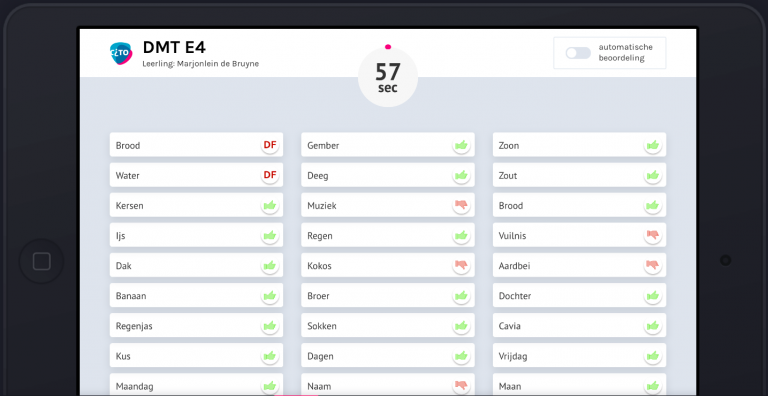
Kees Van Den Broek
CEO of ITSLanguage
The Smart Three Minute Test (DMT)
2021-01-20

The Smart Three Minute Test (DMT)
What is the Three Minute Test?
The Three Minute Test (DMT) evaluates a child's reading speed and accuracy by counting how many individual words they can read in three minutes. The student is provided with a card containing 4 or 5 rows of 30 distinct words. The objective for the child is to orally read as many words as feasible within 1 minute. The teacher, during this time, marks any words that are mispronounced. After the minute elapses, the student is given another card with more challenging words. At the end of the three minutes, the total number of correctly read words is calculated, subtracting any mispronounced ones. The DMT is a staple in 70% of primary schools in the Netherlands, with each child being tested individually by the teacher, assistant teacher, or internal supervisor. Internationally, similar tests, comparable to the DMT such as the AVI keys (reading texts instead of individual words), are conducted in a like manner.
Bottlenecks in the Current Three-Minute Test
- Labour Intensive: Administering the DMT requires significant effort.
- One-on-One Requirement: A teacher or facilitator is needed for each student to time the test using a stopwatch while simultaneously noting down any pronunciation errors.
- Organizational Challenges: Due to its nature, a quiet environment is often sought for the DMT. Conducting the test for all groups multiple times a year demands significant logistical planning.
- Subjectivity: Although guided by nationally established assessment criteria, it's up to the teacher's discretion to determine if a word has been pronounced correctly.
- Processing Difficulties: The recorded readings need to be manually uploaded for each student to a centralized server, making retrieval challenging. Furthermore, scores must be processed manually.
Objective of the Smart Three Minute Test
The aim is to create an intelligent DMT with digital sampling and automated evaluation via advanced speech technology, which will be tested in a pilot phase. Anticipated benefits include:
- Efficiency: A group of students can conduct the smart DMT simultaneously and independently. The automated system checks their performance in real-time, drastically reducing costs.
- Data Management: Results are systematically stored, offering statistics on progress and performance. This data can be integrated seamlessly with student tracking systems.
- Time Saving: The invaluable time of limited teaching staff is preserved. The consistent evaluation system also allows for the playback of recorded words for manual assessment by a teacher at a later time.
- Flexibility: The system provides opportunities for practice outside of traditional settings, like at home. Additionally, through the app, there are options for visual font adjustments and other enhancements.
Achieved Results of the Smart Three-Minute-Test
Our primary achievements stem from R&D efforts, where we've mastered the detection of words in succession at a rapid pace (real-time). This technology has been implemented in a final product designed for educators, as demonstrated in the subsequent screens:
Interested in Implementing? Educational institutions and publishers searching for a smarter testing method can reach out to us in the bottom of the website.
Acknowledgements: The development of the smart Three-Minute Test was possible due to contributions and collaborations with various partners. Special thanks to the Stimuleringsfonds Metropoolregio Eindhoven for partially funding this project.